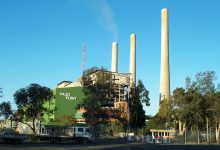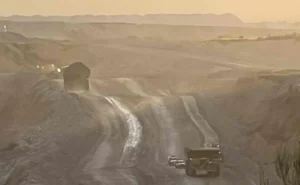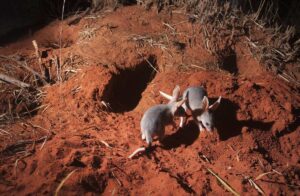Most of the Australian government’s 2020 budget was unsurprising. It’s packed with levers and hammers and tweezers to try and coax Australia through the inevitable pandemic-caused recession, attempting to place guide rails under the dip in economic growth and lift it upwards.
As we already well know (and I have been shouting since April), a centrepiece of the government’s plans involve investing heavily in expanding the extraction and burning of fossil fuels. Ever since bushfires tore through the heart of the country, the government has redoubled its efforts to make Australia more deeply reliant on the sale and burning of fossil fuels – particularly gas, currently the key driver of growth in global emissions.
This wasn’t obscured in the budget, either. “[There is] $1.9 billion in new funding as part of our energy plan to support low emissions and renewable technologies, helping to lower emissions and address climate change”, said Treasurer Josh Frydenberg, in the speech’s only mention of climate.
This was followed immediately by “We’re also helping to unlock five key gas basins. Starting with the one in the Northern Territory and the North Bowen and Galilee Basins in Queensland”. Australia’s most recent emissions data highlighted that the extraction of fossil gas is so emissions intensive that it is now the primary driver of upwards pressure on emissions for the country’s domestic climate impact. That’s not even counting the burning of gas – this is the climate impact purely from locking in future climate impacts. It’s tragic and ludicrous and horrifying.
As RenewEconomy’s Michael Mazengarb pointed out, the real meaning here is to be found in the holes, not the substance. The budget, as with the government’s broader climate policy philosophy, intentionally ignores accelerating the deployment of available solutions to a rate that’s compatible with climate goals, and instead places sole focus on marginal technological improvements that alone are insufficient.
“Electric vehicles barely feature, attracting a mere $5 million of in funding for a new assembly plant and vehicle-to-grid trial”, writes Michael. It is a stunning omission, given the sheer depth of decarbonisation that could be acheived in such a short timeframe in the transport sector.
As has become the trend in Australian climate and energy policy, the federal budget is as much about what's not getting funded as much as it is about where taxpayer money is headed.https://t.co/cPzinO5wtu
— Michael Mazengarb (@MichaelM_ACT) October 6, 2020
https://twitter.com/KetanJ0/status/1313405532783378434
The new significance of this moment is, to me, simply the addition of another horrifying notch on the government’s record of not just ignoring climate action, but actively worsening climate impacts. It centres around the Vales Point coal fired power station, in New South Wales. Built more than two decades before I began existing, the plant is one of five NSW coal behemoths, contributing to the fat, solid block of black that results in NSW’s power consumption being dominated mostly by highly polluting sources.
Like the Liddell coal-fired power station, so recently the target of government coal-closure anxiety expressed in the weirdest of ways, the plant is due to shutdown soon (2029), making it a target for concern. Putting coal on life support using taxpayer funding is the main game right now. And the owner of the Vales Point power station, Liberal party donor and coal baron Trevor St Baker, has been struggling to secure taxpayer funding for this facility for some time.
First, the plan was to fund the plant through the government’s ‘Emissions Reductions Fund’, which made some progress but was ultimately rejected because it was far too obviously ludicrous. Then, there was talk of the plant’s upgrade being funded through the government’s ‘Underwriting New Generation Investment’ (UNGI) plan. Also perhaps a little too obvious, for the ‘new generation’ policy to hand over money to an ancient coal plant.
It seems the government has simply decided on avoiding any pretence of rationality and simply handing the cash over with no attempt at justification. The budget paper is vague; there’s no clarity on the quantity of money. It seems to be part of an earlier deal revealed by RenewEconomy this year with the NSW state government, but there’s little chance of more clarity any time soon.
What we do know is that a previously proposed upgrade would have been a measly 1.3% reduction in emissions below Vales Point’s normal pollution levels. What we also know is that Vales point is an absolute monster when it comes to carbon emissions – easily one of Australia’s biggest single sources of coal-caused climate harm. It has the tenth highest emissions of all power stations in Australia in 2018-19, according to the Clean Energy Regulator. And it is a significant player both in NSW and all of Australia as a source of emissions:
 Extending the life of this power station would lead to a very, very significant increase in Australia’s total emissions, even if it were paired with a miniscule percentage decrease in the emissions intensity of the power station. A 2% decrease in emissions intensity, applied to 2018-19, would reduce scope 1 emissions by around 134,000 tonnes. Unfortunately, even with that decrease applied, it’d be wiped out within seven days of the plant’s extended operation past its death date. Seven. Days.
Extending the life of this power station would lead to a very, very significant increase in Australia’s total emissions, even if it were paired with a miniscule percentage decrease in the emissions intensity of the power station. A 2% decrease in emissions intensity, applied to 2018-19, would reduce scope 1 emissions by around 134,000 tonnes. Unfortunately, even with that decrease applied, it’d be wiped out within seven days of the plant’s extended operation past its death date. Seven. Days.
Every week, the government descends deeper into this habit of worsening the climate public health crisis under the false guise of trying to recover from the COVID19 public health crisis. Of course, hurling public funding at failing fossil fuel projects isn’t good for the economy, or public health. But the handing of public grant money to what is truly one of Australia’s biggest coal-hungry emissions monsters is a notable escalation in the government’s accelerating descent into climate self destruction.












